2023 Toyota RAV4 Review: Compact SUV veteran is still in the game

Pros: Something-for-everyone variants; strong fuel economy; available plug-in hybrid; reliability and resale value
Cons: Unrefined powertrains; no more physical infotainment buttons; less luxurious than rivals
The 2023 Toyota RAV4 now finds itself as an elder statesman in the compact SUV segment as most rivals have now been completely redesigned since it underwent its own radical makeover for ’19. The Honda CR-V, Kia Sportage and Mazda CX-50 represent particularly fierce challenges, and indeed, it’s harder to recommend the RAV4 these days. We still do, though, since its unmatched variety of trim levels, exceptional fuel economy and long-term ownership prospects add up to a small SUV that should make sense to a lot of buyers.
Let’s talk about that variety a bit, which actually increases for 2023 as Toyota finally saw fit to give hybrid seekers an outdoorsy answer to the gas-only Adventure and TRD Off-Road: the new Woodland Edition. Basically, the RAV4 now offers three rugged trim level choices while the CR-V and Nissan Rogue, for example, offer none. And among rivals that do offer such trims, the RAV4’s represent more of an actual functional upgrade than most. Going in a much different direction, there are also sportier trim levels, specifically for the RAV4 Hybrid and plug-in hybrid RAV4 Prime, and more traditional LE, XLE and Limited guises for those who are just fine without a niche. Simply put, there’s something for everyone.
Everyone will need to put up with some hiccups, though. The gas-only and hybrid powertrains are less refined than those of rivals despite offering compelling power and fuel economy. Toyota’s infotainment system also remains a love-it-or-hate-it proposition – they may be new for 2023, but they’ve traded “ugly and slow but functional” for “pretty and quick but frustrating.” Basically, nothing deal-breaking per se, but it makes for a tougher choice between the RAV4 and those newer, very impressive rivals.
Interior & Technology | Passenger & Cargo Space | Performance & Fuel Economy
What it’s like to drive | Pricing & Trim Levels | Crash Ratings & Safety Features
What’s new for 2023?
Every 2023 RAV4 gains an updated infotainment system, including a new 10.5-inch touchscreen on top trim levels. A 12.3-inch digital instrument panel is now standard on the Limited and Prime XSE, and optional on TRD Off-Road and Hybrid XSE. The RAV4 Hybrid Woodland Edition also debuts for 2023, giving the Hybrid its first off-road-oriented trim level (the Adventure and TRD Pro have been and will continue to be gas-only). Pictured above, the Woodland gains a TRD-tuned suspension with coil springs, bump stops and twin-tube shocks intended for more of an off-road focus. Falken Wildpeak all-terrain tires are brought over from the TRD Off-Road and wrap around bronze-colored wheels. Raised black roof rails and cross bars, a 120-volt inverter and all-weather floor mats complete the outdoor adventure requirements, while special black badging adds to the modestly unique look.
What are the RAV4 interior and in-car technology like?
Interior materials are acceptably average for the RAV4’s compact crossover class, and much better than past generations. Fit and finish are excellent. That said, the RAV4 never achieves the near-luxury vibe of its rivals’ top trim levels. Genuine leather is not available, and the SofTex vinyl that comes on up-level models isn’t a convincing substitute. This could certainly be a problem on pricier trim levels, especially the Prime that can approach $50,000 with options. Nevertheless, we like the use of colorful trim pieces that differentiate the various models, preferring them to unconvincing fake wood or metal trim of rival SUVs. And if you are going for a more premium vibe, the Toyota Venza is basically just a fancier RAV4 Hybrid. And the new Lexus NX is a fancier step beyond that.
In-car storage is better than most with large and versatile cupholders, an easily accessed spot to store and charge your phone, an under-armrest bin and unique shelves built into the dash. In the cargo area, the floor is double sided (one carpet, one easy-to-clean plastic) and the cargo cover can be hidden away below it. Neither is included with the RAV4 Prime, but we do like that it provides a spot for the cumbersome portable charge cord: it cleverly can be wrapped around a foam doughnut within the spare tire. Usually a plug-in vehicle resorts to a small briefcase-like bag that takes up cargo space.
A new all-digital instrument panel (below right) debuts on top trim levels for 2023, which catches the RAV4 up with most of the segment. The tech interface is also new for 2023, but it’s remains a mixed bag. The good news is that it looks far more modern, has more state-of-the-art features, and reacts far quicker to user inputs – all issues that plagued the outgoing system. The screens are also bigger, with the base touchscreen growing to 8 inches and the top-of-the-line growing to 10.5. The bad news is that they’re no longer accompanied by the handy physical menu buttons that made the outgoing system so user-friendly (the radio controls were also far better). Going in between Toyota’s controls and the Apple CarPlay/Android Auto interfaces are particularly annoying without the old home button or at least menu buttons permanently docked on the screen. How you feel about any of this will largely depend on how you use a car’s tech interface, but either way, we think the systems of most rivals remain superior.
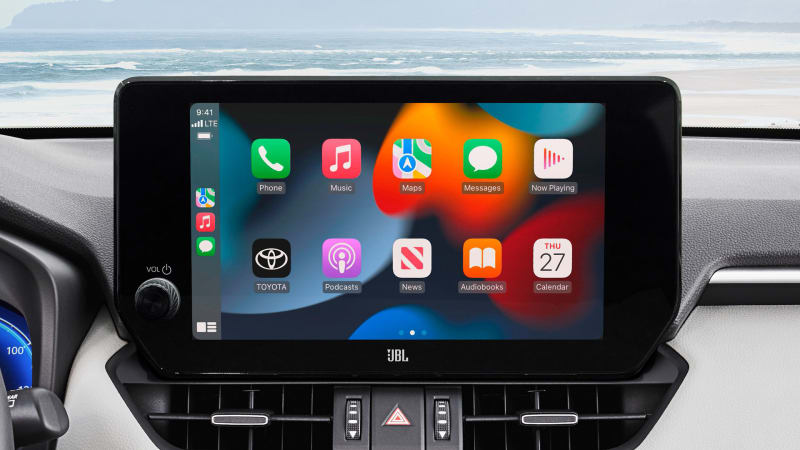
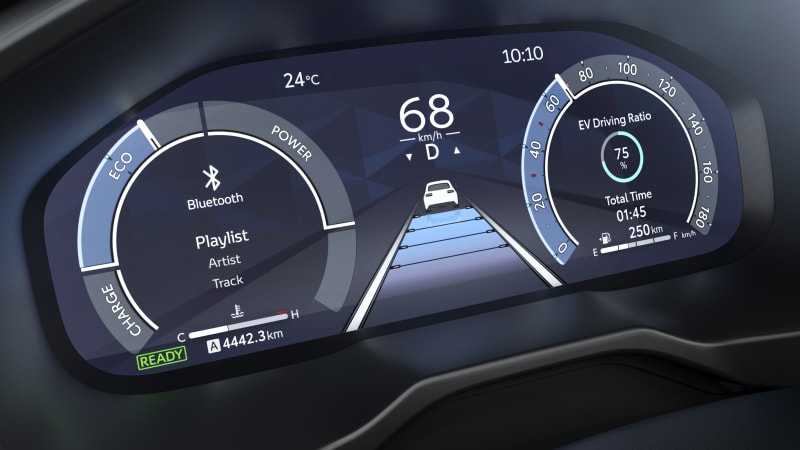
How big is the RAV4?
Today’s RAV4 isn’t quite as utilitarian as the boxier last generation, with headroom in particular possibly being a bit tight when outfitted with a sunroof. Rear seat legroom is also only midpack for the segment, with the CR-V, Tucson and Sportage in particular besting it. We also found both the CR-V and Subaru Forester slightly better when it came to fitting child seats. That said, we’re talking about degrees of “really big and practical” here. Full-sized adults and rear-facing child seats will have no problem fitting, and if you’re seeking family-friendly transportation, it’s hard to imagine being disappointed by the RAV4’s passenger space. It’s just that you might be able to find a bit more in something else.
It’s a similar situation with cargo capacity. Cargo volume of 37.5 cubic feet with the back seats raised or 69.8 cubic feet with them folded is bigger and better than most compact crossovers (including the new Honda CR-V), but also less than the Kia Sportage and Hyundai Tucson. We confirmed this cargo-carrying pecking order in our luggage tests of them all (plus a comparison of the RAV4 and the last-generation CR-V). One important thing to note: the RAV4 and Sportage hybrids include spare tires. The CR-V and Tucson hybrids do not, so while all of the above have basically the same cargo capacity numbers as their gas-only counterparts, there is in fact a key difference. Now, the RAV4 Prime does lose its spare tire and some cargo space as well since its floor is higher, but we doubt you’d notice the resulting difference.
We would also be remiss if we didn’t mention the RAV4’s ample ground clearance, especially in the Adventure and TRD Off-Road trim levels, which contributes to it being one of the more capable compact SUVs off the beaten path. Only the Subaru Forester, and especially its new Wilderness model, and Jeep Cherokee Trailhawk have greater clearance than the off-road-oriented RAV4s. Even the lowest RAV4 — the XSE Hybrid — still clears 8 inches, which is better than most.
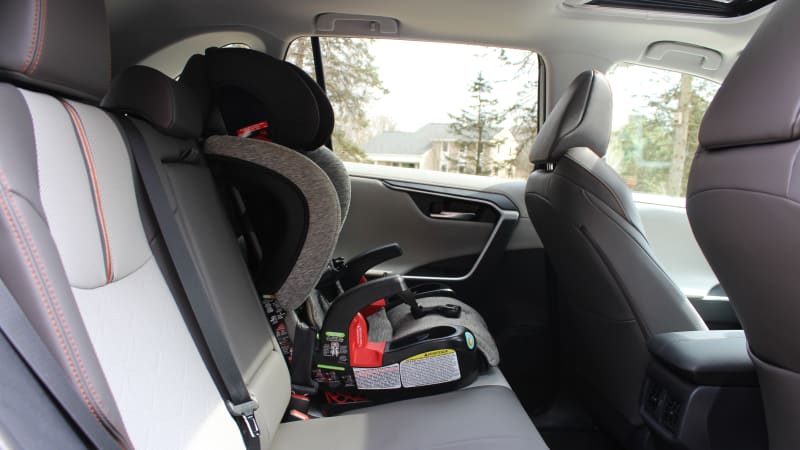

What are the RAV4 fuel economy and performance specs?
The standard RAV4 powertrain is a 2.5-liter four-cylinder good for 203 horsepower and 184 pound-feet of torque. That’s above average for the segment, but acceleration doesn’t wow, with a run from 0-60 mph taking an estimated 8.1 seconds.
An eight-speed automatic transmission and front-wheel drive are standard, while two all-wheel-drive systems are optional depending on trim level. The first is a basic reactive system that sends power to the rear wheels in the event of slippage, whereas the second available on the Adventure, TRD Off-Road and Limited trim levels more actively sends power around, including between the rear wheels to improve wet weather traction as well as dry road handling. It also includes off-road vehicle settings for “Mud & Sand,” “Rock & Dirt” and “Snow.”
Fuel economy with front-wheel drive is 27 mpg city, 35 mpg highway and 30 mpg combined. Opting for one of the all-wheel-drive systems knocks down the highway and combined numbers by 1 or 2 mpg. No big deal, really. That includes the TRD Pro and its all-terrain tires – we even managed 31.3 mpg during a 700-mile road trip in the TRD Off-Road.
The RAV4 Hybrid gets a different 2.5-liter engine along with three electric motors that combine to offer up 219 horsepower. The electric motor at the rear effectively gives the Hybrid standard all-wheel drive. Its 0-60 estimate is 7.8 seconds, meaning the Hybrid is not only a more fuel-efficient choice, but a higher performance one too (albeit barely). Fuel economy stands at 40 mpg city, 38 mpg highway and 40 mpg combined for all trim levels but the Woodland, which gets knocked down to a still-exceptional 38/35/37 due to its all-terrain tires.
Finally, there’s the new RAV4 Plug-In Hybrid that has more powerful motors and a higher capacity battery pack. When fully charged, it yields 302 total system horsepower, a 0-60 time of 5.8 seconds and an EPA-estimated range of 42 miles (more than most other PHEVs). Should you exhaust the all-electric range, it basically operates like the regular hybrid and returns similar fuel economy. So, the more you use its all-electric range, the more efficient it is.
What’s the RAV4 like to drive?
The RAV4 isn’t the boring, anonymous crossover it once was. It may not engage like a Mazda CX-50, but there is still an eagerness to its turn-in and a commendable poise through corners without sacrificing ride quality. The handling capability and steering feel of the various models also isn’t vast, though the sport-tuned SE/XSE Hybrid (pictured above) and Prime models are certainly more adept at tackling a winding mountain road. Even the TRD Off-Road and new Woodland Edition are capable handlers, although their all-terrain tires do create a lot of road noise.
Really, the biggest difference comes down to powertrain choice. The base four-cylinder looks good on paper, but in practice, it’s merely acceptable for the segment and we found it a bit loud and buzzy. The Hybrid actually improves this, as it adds that initial kick of electric power to smooth things out. Still, prolonged acceleration reveals the typical Toyota hybrid drone that you just don’t get in the Hyundai/Kia or Honda systems. Ultimately, both of these engines are about providing good fuel economy without a penalty for drivability (there’s no throttle lag or unusual transmission programming, for instance). They succeed, but if you want more refinement or guts, you’ll have to look elsewhere.
Now, “elsewhere” could very well be the RAV4 Prime. It has 302 horsepower when the battery is fully charged and its acceleration is a strong and inspiring as its 0-60 time of 5.8 seconds would indicate. It genuinely feels like an electric car. However, that changes when that all-electric range is exhausted. Acceleration goes from inspiring to unremarkable. So, whether you’re talking performance or fuel economy, it’s best to keep the Prime charged.
What other Toyota RAV4 reviews can I read?
2021 Toyota RAV4 Prime First Drive
Our specific review of the Prime shows that a plug-in hybrid powertrain makes for a better RAV4, but a RAV4 also makes for a better plug-in hybrid. It has a different tech interface and instrument panel now, but our impressions remain broadly the same.
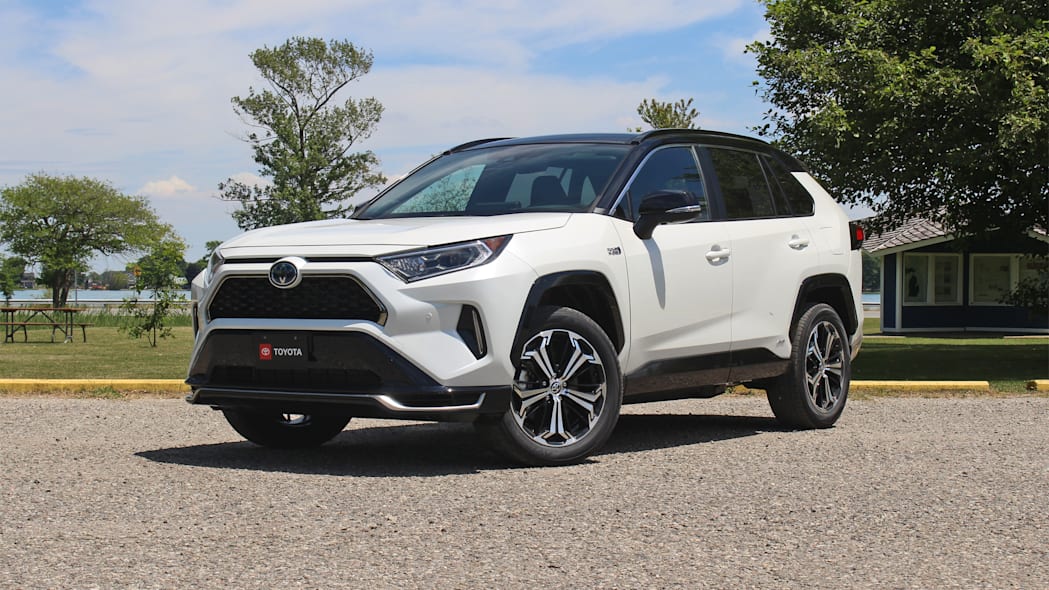
2020 Toyota RAV4 TRD Off-Road Review
We drive (and sail!) the most off-roady version of the RAV4 on a 700-mile road trip to western Canada. Though it looks slightly different now and has a different tech interface, our overall conclusions remain the same.
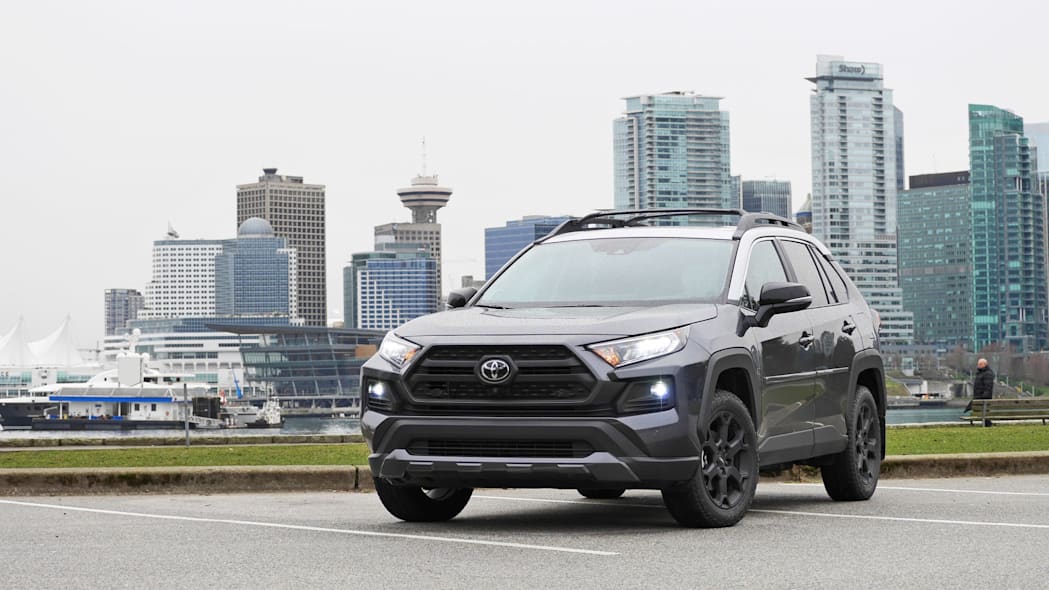
2020 Toyota RAV4 Interior Review
We dive deep into the RAV4’s interior storage, quality and technology. As the technology has now been replaced, feel free to skip those bits.
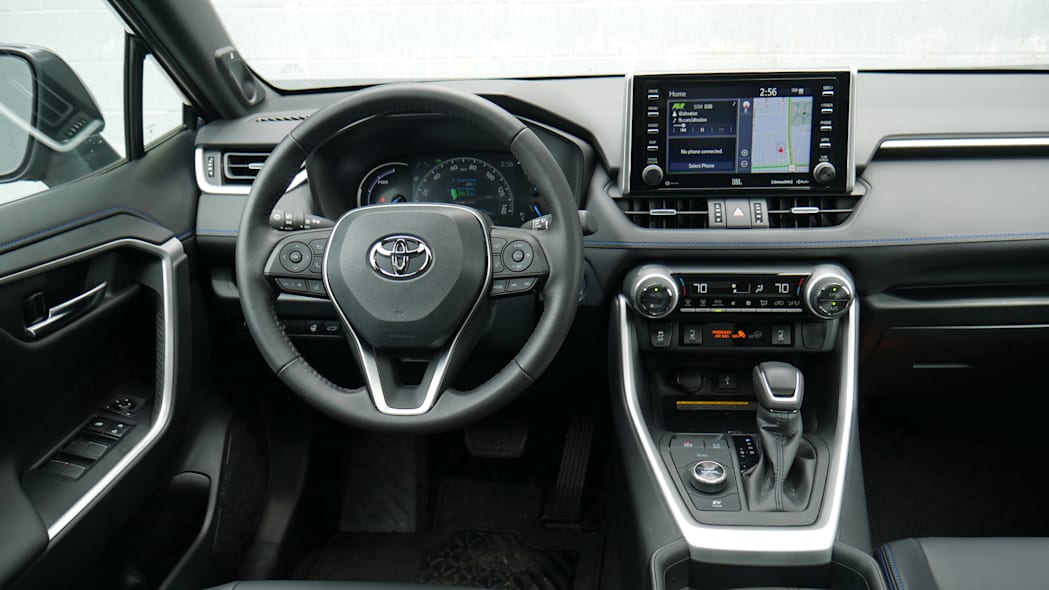
Toyota RAV4 vs Honda CR-V Cargo Capacity Comparison Test
We know the numbers say the CR-V is a bit bigger, but we put the numbers to the test with actual luggage.
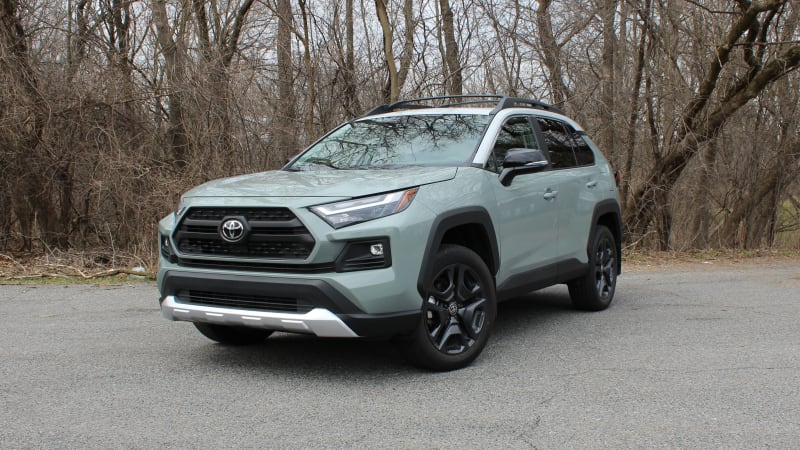
Car seat comparison test: Toyota RAV4 vs Mazda CX-5 vs Subaru Forester vs (last-gen) Honda CR-V
A deep dive comparison of the space and ease of installation provided by the RAV4 and three key rivals for child seats.
2019 Toyota RAV4 First Drive Review | Definitely not playing it safe
A comprehensive look at all the changes undergone for the current RAV4 generation, including details about its design and engineering.
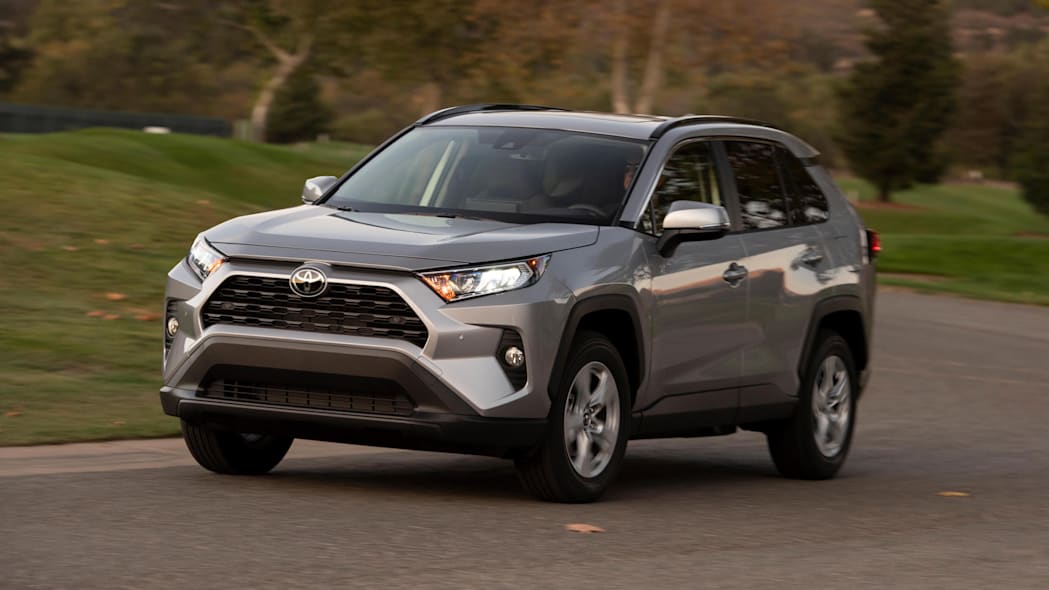
2019 Toyota RAV4 Adventure Drivers’ Notes Review | More character, more capability
Our review of the off-road-oriented Adventure trim level, which boasts additional ground clearance and chunky good looks that we prefer over the standard version.
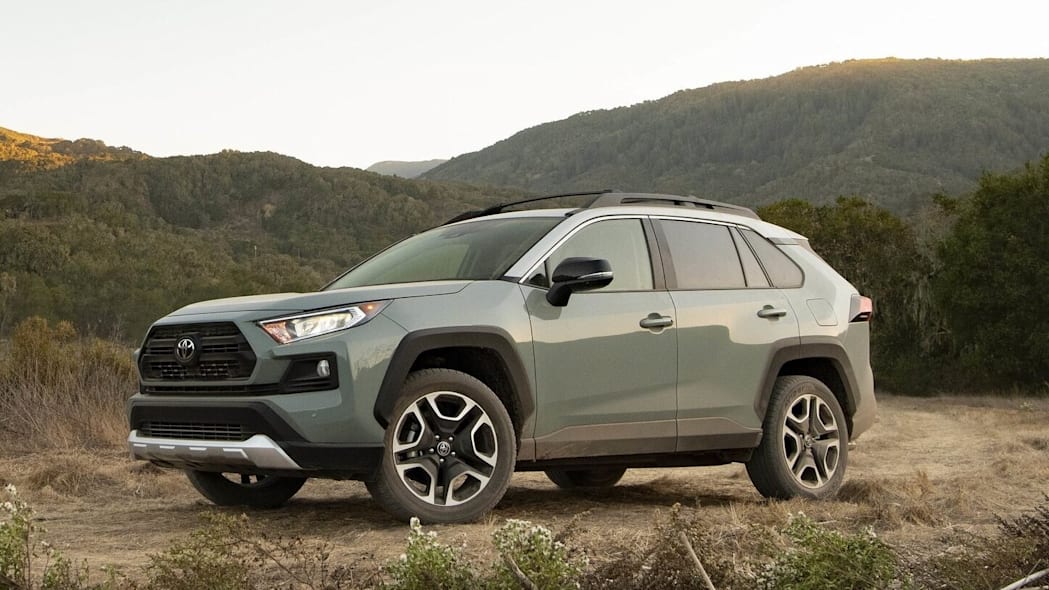
2019 Toyota RAV4 Hybrid Drivers’ Notes Review | A wallflower no more
Our Quick Spin review of the RAV4 Hybrid, which we found is very nice to drive despite its intended role as the fuel-sipping option.
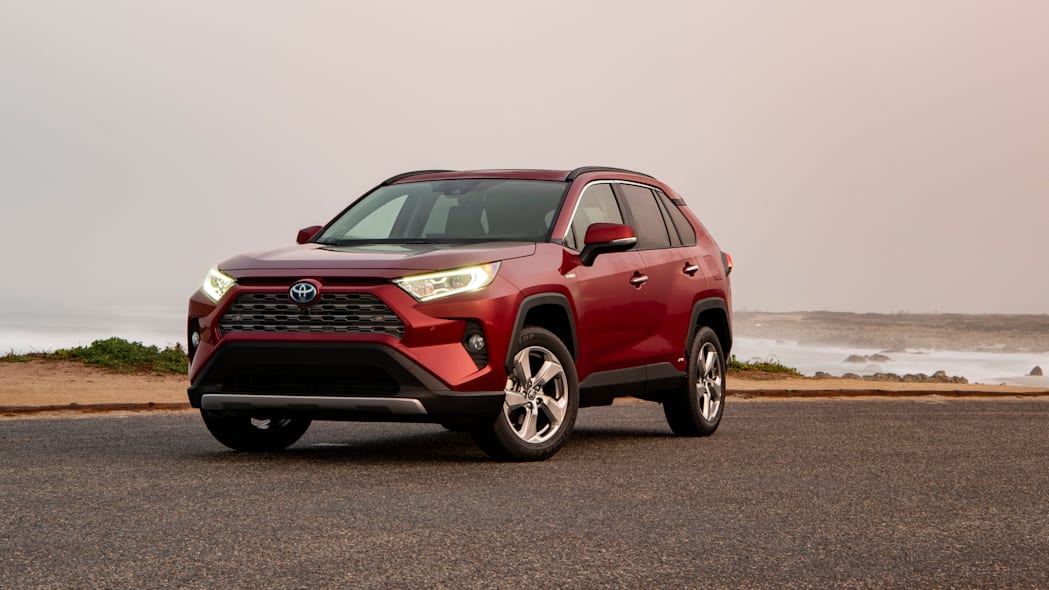
What is the 2023 Toyota RAV4 price?
The RAV4 offers buyers the most diverse array of choices in the compact SUV segment. Rather than just a traditional trim level structure where each trim level has more feature content, the RAV4 provides different looks and skill sets. Specifically, anything with “SE” in the name has a sport-tuned suspension and steering, and has racier looks with lots of cool black trim. The Adventure, Woodland and TRD Pro are more rugged and intended for outdoor adventures. Anything with “LE” is more of a traditional choice in terms of look and suspension/steering tune, while the Limited is the most luxurious a RAV4 can get (though it’s admittedly less luxurious than the comparable trims of rivals).
You can find a breakdown of each trim level’s features, specs and local pricing here at Autoblog for the gas-only RAV4, here for the RAV4 Hybrid and here for the RAV4 Prime. Yes, it’s annoying that we don’t put them all on the same page. Sorry.
All prices below include the $1,335 destination charge. The RAV4 Prime may also be eligible for state-level rebates or tax credits.

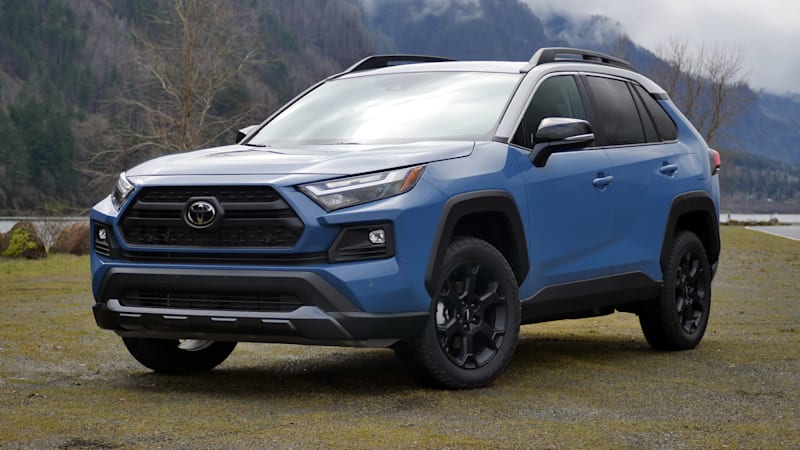
RAV4
LE: $29,310
XLE: $30,820
XLE Premium: $33,710
Limited: $36,280
Adventure: $35,505 (above left)
TRD Off-Road: $38,930 (above right)
All-wheel drive is a $1,400 option on all but the Adventure and TRD Off-Road, which included it as standard.
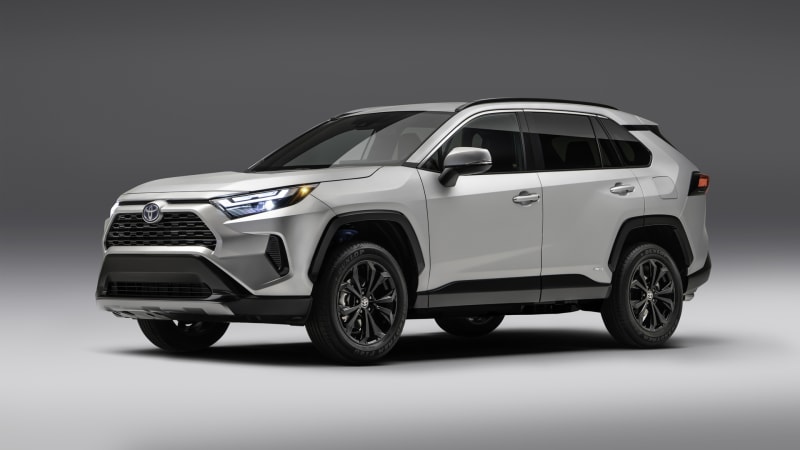
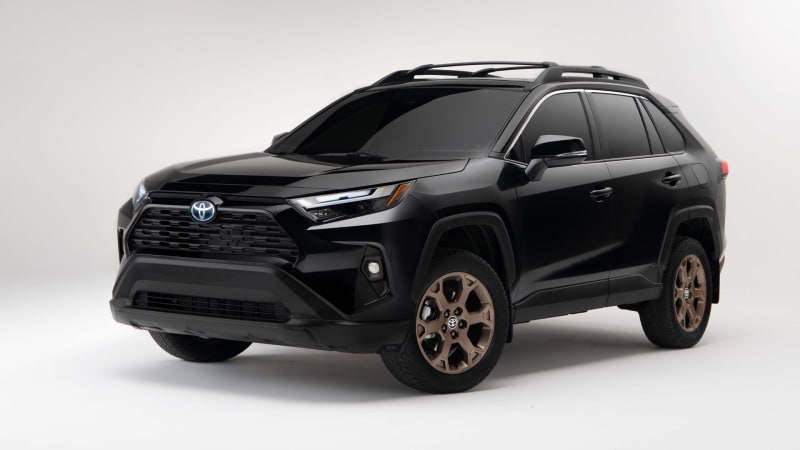
RAV4 Hybrid
LE: $32,060
XLE: $33,570
SE: $34,755 (pictured above left)
XLE Premium: $36,460
XSE: $37,720
Limited: $40,365
Woodland: $34,860 (pictured above right)
All-wheel drive is standard on all Hybrid trim levels.
RAV4 Prime (below)
SE: $43,675
XSE: $47,545
All-wheel drive is standard on both trim levels.
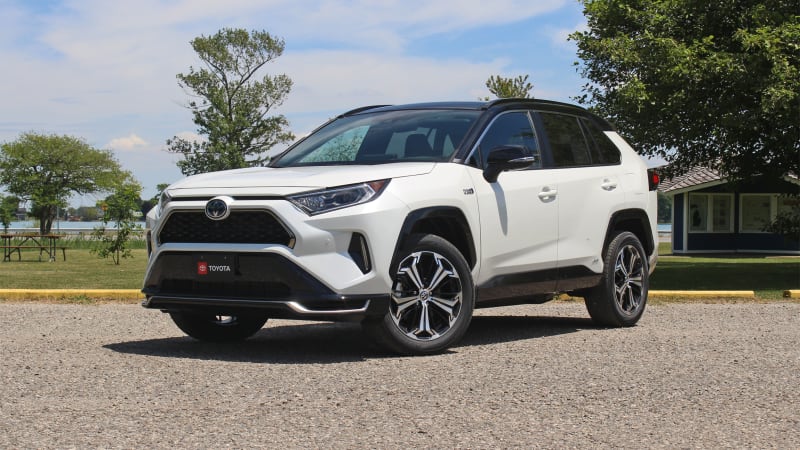
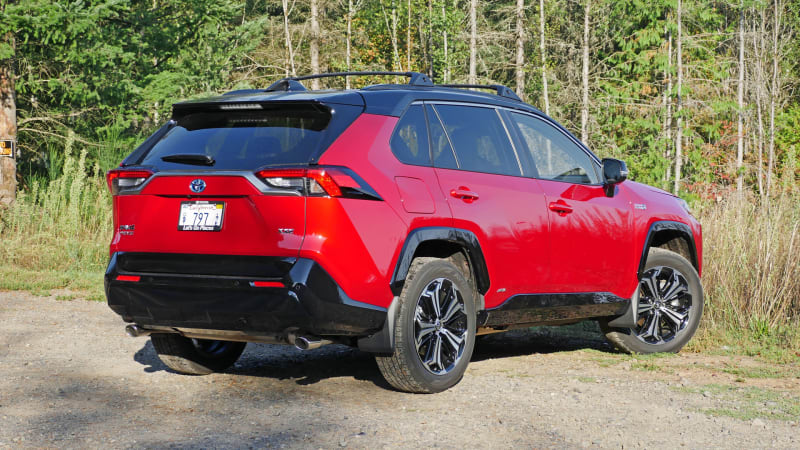
What are the RAV4 safety ratings and driver assistance features?
Every RAV4 comes standard with forward collision warning and automatic emergency braking with pedestrian and cyclist detection, emergency steering assist, lane-departure warning and lane-keeping assist, automatic high beams, and adaptive cruise control. Blind-spot and rear cross-traffic warning systems are optional on the LE trim level and standard on all others. A rear cross-traffic automatic braking system is standard on the Limited and optional on all trims but the LE.
The National Highway Traffic Safety Administration gave the RAV4 five out of five stars for overall and side crash protection, and four stars for frontal. The Insurance Institute for Highway Safety named the RAV4 a Top Safety Pick for its “Good” ratings in all crash tests but the two newest, more stringent IIHS crash test where it got a second-best “Acceptable.” Its “Good” headlight rating and top marks for its collision prevention tech rounded out its credentials for the award.
Related Video:




